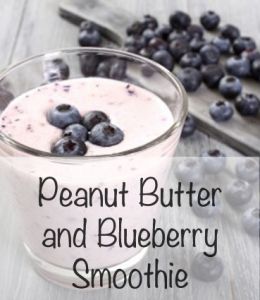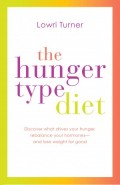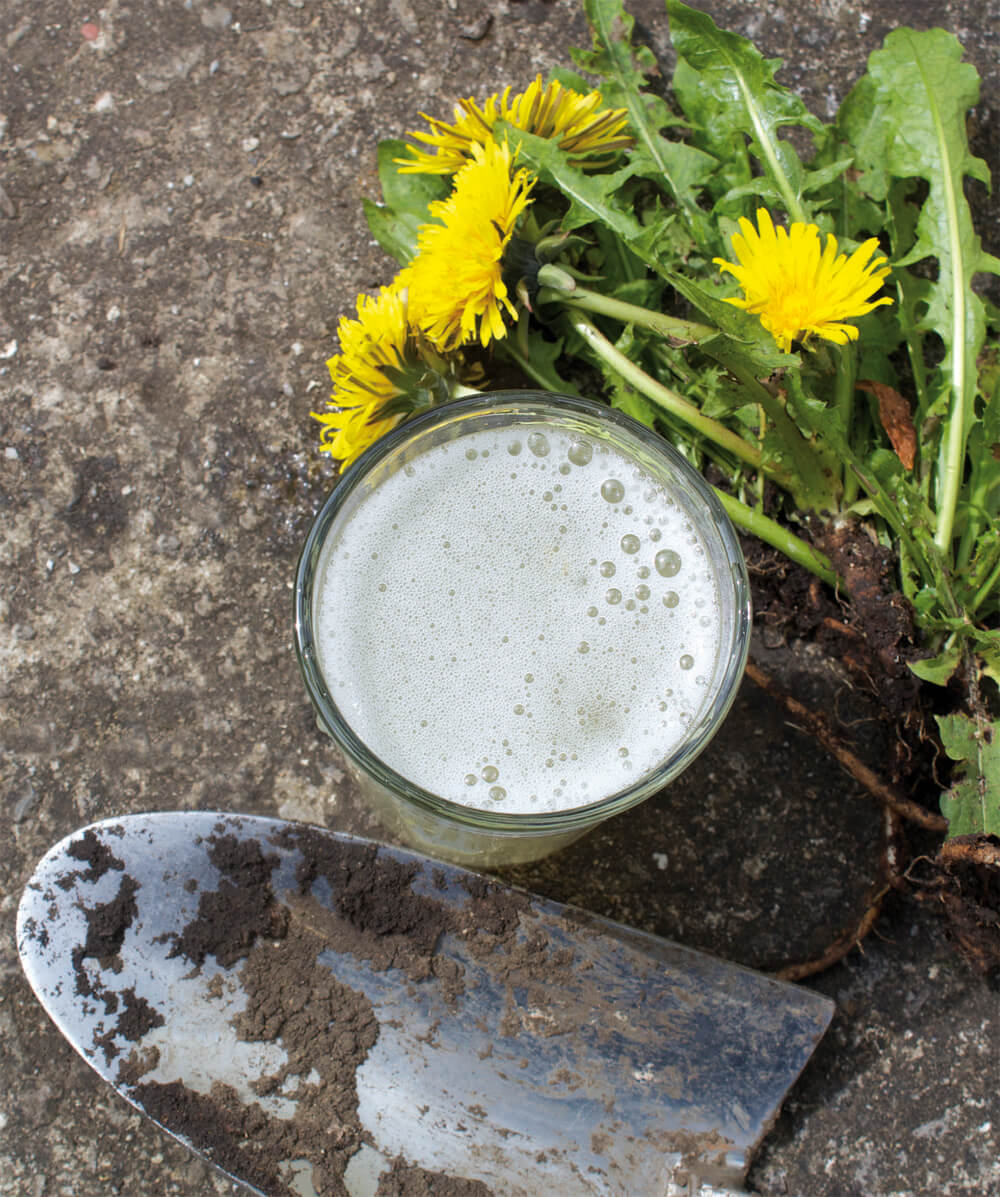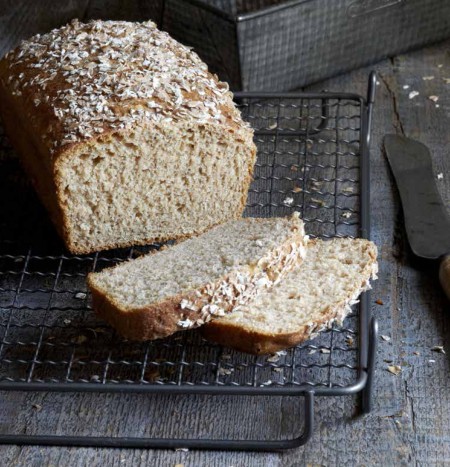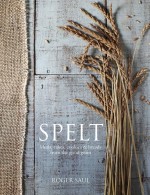Ingredient Spotlight/ Gluten Free Flour
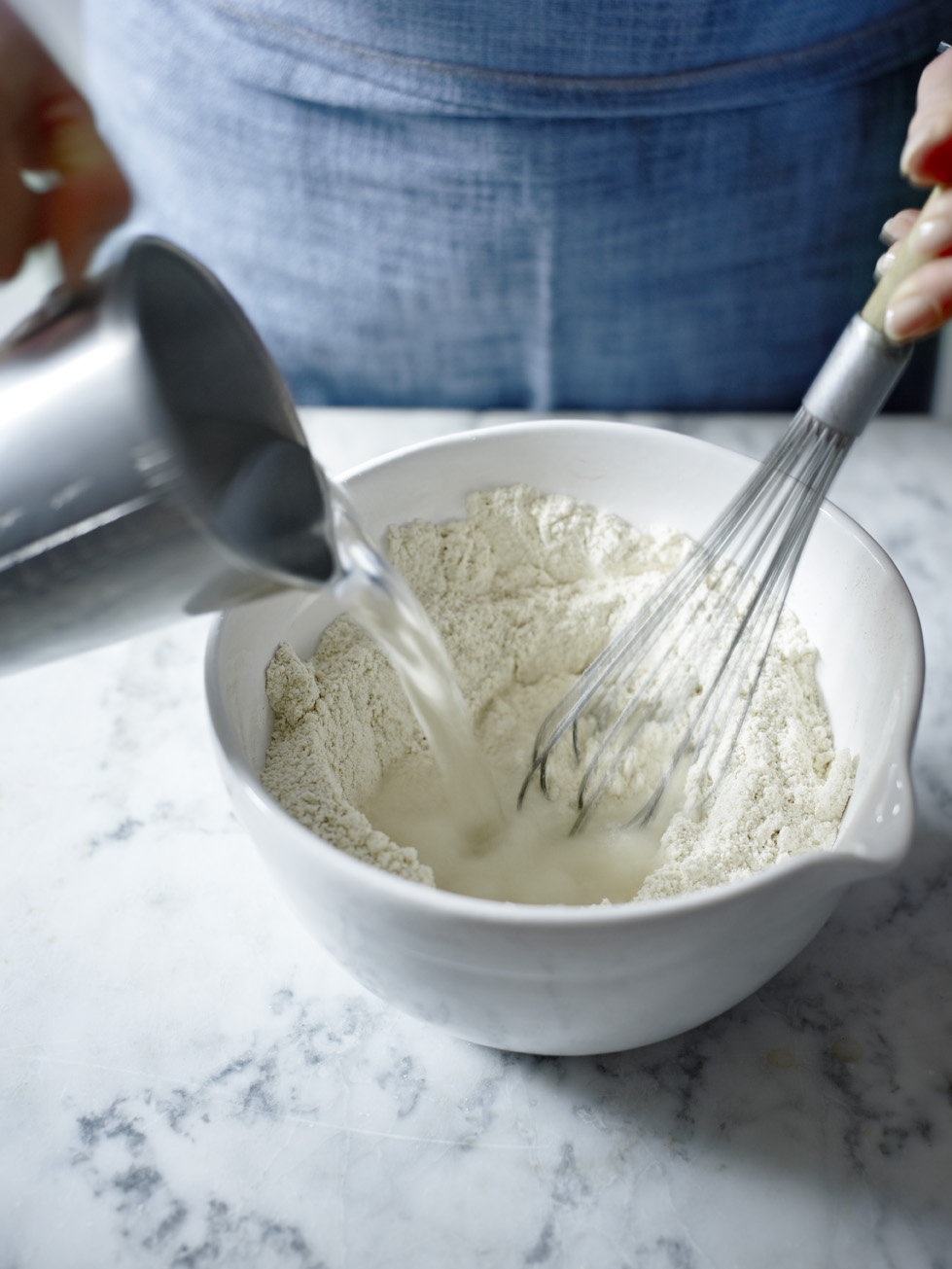
This article is an extract from The Best Gluten-Free and Dairy-Free Baking Recipes by Grace Cheetham.
Look around the free-from section of a health-food store or a large supermarket and you’ll find a large variety of gluten-free and dairy-free products. Food manufacturers are continually producing fantastic ingredients – all of which make it easier and easier to cook wonderful free-from food.
Flour Mixes
For baking, it’s a good idea to start with a selection of flours. I’ve created different flour mixes for different types of recipes, depending on the texture and amount of crunchiness or softness needed. In the Basic Recipes chapter, you’ll find different mixes for Flaky Pastry, Shortcrust Pastry, Sweet Shortcrust Pastry, Bread, Cakes and Biscuits. The pastry and bread mixes use sturdy flour combinations, so that they hold together well, whereas the Cake Mix produces a soft, moist texture, and the Biscuit Mix a crunchy one.
I’ve used brown rice flour in all of the mixes as it is a great base flour. It has a lovely taste and holds really well. When the mix needs a stronger flour base, I’ve used a combination of gram (chickpea) flour and maize flour. These are both great in terms of holding together and, while the gram flour has quite a strong taste, when it’s combined with maize flour that has a subtle, slightly sweet taste, it works really well. (For those who had stopped using gram flour because of the taste – trust me!).
It’s important to create a balance of grain flours and starch flours, depending on the type of recipe. The flours I’ve just mentioned are all grain flours. Starch flours work slightly differently, in that they tend to lighten the mix and give rise to the baking. For starches, I’ve generally used cornflour because it’s inexpensive and easy to find, has a very bland taste and gives a fantastic consistency. For bread, though, I’ve added potato flour as it helps create a moist, tender crumb texture, as well as a better rise.
I’ve added ground almonds to the Sweet Shortcrust Pastry – to make it sweeter, and help hold the pastry together – and to the Biscuit Mix, as it gives biscuits the crunchiness when baked.
I find the best thing to do is to make up large batches of the flour mixes and store them in my cupboard. Depending on the size(s) of your containers, you can make up double or triple quantities, if you’re planning to use a lot of the mix. (But bear in mind that the mix won’t keep forever.) Then it’s just a question of measuring out the required amount for the recipe you are about to make – and off you go…
Alternative Flours
I’ve used a couple of alternative flours within the recipes themselves. In the Oat & Molasses Bread, I’ve added gluten-free oats, to add a sweetness and strong texture. Gluten-free oats are a brilliant ingredient, and it’s easy to make them into a flour by blending them in a food processor. For the Corn Tortillas, I’ve used masa harina, as this finely milled version of maize flour is the only one that works for tortillas. And for the Paleo Bread (grain-free bread), I’ve used coconut flour. Coconut flour is incredibly nutritious, is very filling as it is high in fibre, protein and (good) fat, and is grain-free. It works fantastically well as a flour, although you need to use less of it (a third to half of the recipe quantity and possibly more liquid) because it soaks up more liquid than other flours). But it is expensive – which is why I haven’t used it throughout the book.
There are many other flours that you can use as alternatives, but I wanted to keep the list of ingredients as simple and accessible as possible, and because I think these mixes work the best. Other flours commonly used are buckwheat, millet, teff, quinoa and soya. Other starches available are tapioca and white rice flour. Personally, I find the taste of buckwheat flour too strong, and it is a very heavy flour so it doesn’t rise well. Millet tends to be bitter, teff has a strong taste, too, and it is expensive and hard to get hold of. Quinoa flour also has a very strong taste, although if you can mask the flavour, it is extremely nutritious. Soya flour is probably my least favourite flour as it doesn’t hold well or give a good rise, or taste particularly good. I’m also not keen on tapioca starch as I find it gives a metallic aftertaste, and I know many people are intolerant to it.
But all of these options at least give you that – the option to change the ingredients that you’re using if you decide you prefer another one, or if you need to expand your ingredients list (perhaps if you’re following a rotation diet). If you decide to alter any of the mixes, you can simply substitute a similar flour in the same quantities as those in the mix.
The beauty of making gluten-free bread is that you often don’t have to knead, knock back or leave to prove. You can usually mix the ingredients together, whisk in some water – and bake immediately.
Bread Mix
150g/5½oz/heaped ¾ cup brown rice flour; 60g/2¼oz/⅓ cup potato flour; 60g/2¼oz/½ cup cornflour; 50g/1¾oz/scant ½ cup gram (chickpea) flour; 50g/1¾oz/⅓ cup maize flour; 1 tsp xanthan gum
1. Sift the flours and xanthan gum into a large mixing bowl and mix together.
4 tbsp olive oil, plus extra for greasing; 370g/13oz/2¾ cups Bread Mix ; ½ tsp salt; 1 tbsp dried active yeast; 100g/3½oz/heaped ½ cup good-quality black olives, pitted and chopped; 1 handful of rosemary leaves, chopped, plus extra for sprinkling; sea salt, for sprinkling1 tbsp dried active yeast
1. Preheat the oven to 200°C/400°F/gas 6 and lightly grease a 20cm/8in round cake tin with olive oil.
2. Put the bread mix, salt and yeast in a large mixing bowl and mix together thoroughly. Add the olives, half of the rosemary and
3 tablespoons of the oil and mix in. Pour in 375ml/13fl oz/1½ cups warm water and, using a metal whisk, beat vigorously for 1–2 minutes to aerate the dough. Beat until the dough holds some shape, but is still soft enough to fall from the whisk, adding 1 or 2 extra tablespoons of warm water if it feels too stiff.
3. Spoon the dough into the prepared tin and level the surface with the back of a metal spoon. Wash the spoon clean and dip it in cold water, then smooth the surface of the dough with the back of the wet spoon, repeating to cover the whole area. Drizzle the remaining oil over the top, then sprinkle with rosemary and salt.
4. Bake for 45–50 minutes, or until the bread is golden brown and sounds hollow when turned out of the tin and tapped on the base. Transfer to a wire rack and leave to cool.
Grace Cheetham
The Best Gluten-Free and Dairy-Free Baking Recipes
Available from Nourish Books








